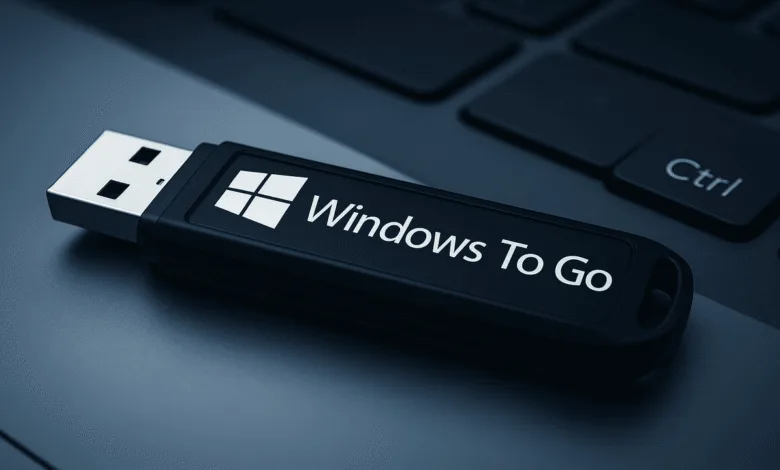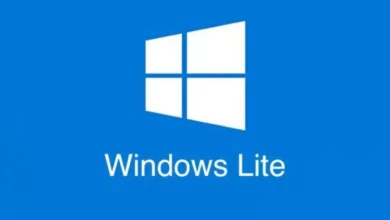Windows To Go: Create a Bootable USB to Run Windows 10 From USB

Ever wished you could carry your entire Windows system in your pocket, ready to plug into any computer and pick up right where you left off? That’s exactly what Windows To Go offers. This powerful feature allows you to install a full, persistent version of Windows 10 or Windows 11 directly onto a bootable USB flash drive or external SSD. Imagine having your personal PC on the move, ready to run Windows 10 from USB (or 11) on almost any machine.
This guide will walk you through every step to create your own portable Windows environment.
What You’ll Need:
Before we dive in, let’s gather the essentials:
- Rufus: A free, powerful, and user-friendly tool specifically designed for creating bootable USB drives.
- Windows 10 or Windows 11 ISO File: This is the disk image of the Windows operating system you want to install.
- A USB Drive (or External SSD):
- Speed Matters: While a standard USB thumb drive will work, it can be slow. For the best performance, an external SSD (like those from Samsung or Crucial) is highly recommended. These offer speeds much closer to an internal SSD.
- USB 3.0 Minimum: Regardless of whether you choose a thumb drive or an external SSD, ensure it’s at least USB 3.0 for decent performance.
Step 1: Download Rufus
Rufus is the magic wand for this process.
- Navigate to the official Rufus website: rufus.ie
- Scroll down to the “Download” section.
- Download the portable version (e.g., rufus-x.x_portable.exe). This allows you to run the program directly without installation.
Step 2: Download Your Windows ISO
You’ll need the installation files for Windows, packaged as an ISO file.
- For Windows 11:
- Search Google for “Windows 11 ISO download” and go to the official Microsoft download page.
- Scroll to the section typically titled “Download Windows 11 Disk Image (ISO).”
- Select the only download option available (usually “Windows 11 (multi-edition ISO)”).
- Click “Download.”
- You’ll then need to select your product language (e.g., English) and click “Confirm.”
- Finally, click the “64-bit Download” button that appears. Save the ISO file to a memorable location.
- For Windows 10:
- Search Google for “Windows 10 ISO download” and navigate to the official Microsoft download page.
- Microsoft often pushes users towards the Media Creation Tool for Windows 10. Under the “Create Windows 10 installation media” section, click “Download tool now.”
- Run the downloaded Media Creation Tool.
- Accept the license terms.
- When prompted “What do you want to do?”, select “Create installation media (USB flash drive, DVD, or ISO file) for another PC” and click “Next.”
- You can usually keep the default language, architecture, and edition settings. Click “Next.”
- Choose “ISO file” and click “Next.”
- Select a location to save your Windows 10 ISO file and click “Save.” The tool will then download the ISO.
Step 3: Create Your Windows To Go Bootable USB Flash Drive with Rufus
With Rufus and your Windows ISO ready, it’s time to create your portable Windows drive. The process is similar for both Windows 10 and 11 ISOs.
- Plug in your USB drive or external SSD.
- Run Rufus (the portable .exe file you downloaded).
- Device Selection:
- At the top, under “Device,” select your target USB drive from the dropdown menu.
- Important for External SSDs: If your external SSD doesn’t appear, click “Show advanced drive properties,” then check the box “List USB Hard Drives.” Your SSD should now be selectable.
- WARNING: Double-check you’ve selected the correct drive. This process will erase all data on the selected drive.
- Boot Selection:
- Ensure “Boot selection” is set to “Disk or ISO image.”
- Click the “SELECT” button next to it.
- Navigate to and choose the Windows ISO file you downloaded earlier.
- Image Option: This is crucial. Click the “Image option” dropdown and select “Windows To Go”.
- Partition Scheme & Target System: Rufus usually auto-detects these correctly (GPT and UEFI are common defaults). You can typically leave these as they are.
- Volume Label: You can change the name of your USB drive here if you wish (e.g., “My Portable Windows”).
- Click “START”.
- Windows Version: A window will pop up asking you to select the Windows edition you want to install (e.g., Windows 10 Pro, Windows 11 Home). If you’re not planning to activate it immediately or using it as a rescue disk, “Pro” is often a good choice.
- Customize Windows Installation: Another window will appear with customization options:
- “Prevent Windows To Go from accessing internal disks”: If you’re using this as a rescue disk to work on the host computer’s files, uncheck this box. Otherwise, leaving it checked can prevent accidental changes to the host PC’s internal drives.
- “Disable data collection (skip privacy questions)”: Recommended to check this.
- “Create a local account with username”: Highly recommended. Check this and enter your desired username. This avoids needing a Microsoft account during the initial setup.
- “Set regional options using the same values as this user’s”: Check this to save time during setup.
- Click “OK.”
- Final Warning: Rufus will warn you one last time that all data on the selected drive will be destroyed. Click “OK” to proceed.
- Wait: Rufus will now create your Windows To Go bootable USB flash drive. The time this takes heavily depends on the speed of your USB drive. An external SSD might take 5-15 minutes, while a standard USB thumb drive could take over an hour.
- Completion: Once finished, the status bar in Rufus will turn green and say “READY.” There’s no explicit “Success!” message. You can now close Rufus.
Your USB drive now contains a full Windows installation! If you explore it, you’ll see a familiar Windows file structure (Program Files, Users, Windows folders).
Step 4: Booting From Your Windows To Go Drive
Now, let’s run Windows 10 from USB (or 11).
- Disable Secure Boot (Important): Most computers will require you to disable “Secure Boot” in the BIOS/UEFI settings to boot from a Windows To Go drive.
- Restart the computer you want to use the USB on.
- As it boots, press the key to enter BIOS/UEFI setup (Common keys: F2, F10, F12, Del, Esc – this varies by manufacturer).
- Navigate to the “Boot” or “Security” section and find the “Secure Boot” option. Disable it.
- Save changes and exit BIOS/UEFI.
- Select Boot Device:
- As the computer restarts again, press the boot menu key (often F12, F10, Esc – again, varies by manufacturer).
- From the boot menu, select your Windows To Go USB flash drive as the boot device.
- Alternatively, you can set the USB drive as the primary boot device in the BIOS/UEFI boot order settings.
- First-Time Windows Setup:
- Windows will begin “Getting devices ready.” This initial boot can take a while, especially on slower USB drives (from a few minutes to 15+ minutes).
- You’ll go through a condensed Windows setup process.
- When asked about network connection, it’s often easiest to select “I don’t have internet” (even if you do) and then “Continue with limited setup.” This helps ensure you use the local account Rufus created.
- You should see the local account you specified in Rufus. Log in.
Once you’re in, you’ll have a fully functional, persistent Windows environment running directly from your USB drive! Changes you make, files you save, and programs you install will remain on the USB drive for your next session.
Understanding Your Portable Windows
- Persistent Installation: Unlike a “live CD” that resets every time, your Windows To Go installation is persistent. Your files, settings, and installed applications will be saved on the USB drive.
- Drive Letters: Your portable Windows installation will typically see itself as the C: drive, while the host computer’s internal drives will be assigned other letters (e.g., D:, E:).
Important Limitations of Windows To Go
While incredibly useful, Windows To Go has a few limitations to be aware of:
- No Major Version Upgrades: You generally cannot perform major Windows feature updates (e.g., upgrading from one year’s major build to the next) on a Windows To Go drive. Security updates might work, but for significant upgrades, you’ll likely need to recreate the drive with Rufus using a newer ISO.
- Hibernation Disabled: Hibernation is typically disabled by default.
- No Windows Recovery Environment: The Windows Recovery Environment (WinRE) is not available.
- TPM Not Used: Trusted Platform Module (TPM) is not utilized.
- Other Differences: Microsoft has a detailed list of other differences on their documentation pages for Windows To Go.
Conclusion
Creating a Windows To Go bootable USB flash drive is a straightforward process, especially with a tool like Rufus. Whether you want a pocket-sized version of your personal setup, a rescue disk, or a way to run Windows 10 from USB on various machines, this method provides incredible flexibility. While the Secure Boot adjustment might be a slight hurdle, the convenience of a portable, persistent Windows environment is often well worth it.
Now you have the power to take your Windows workspace anywhere!
